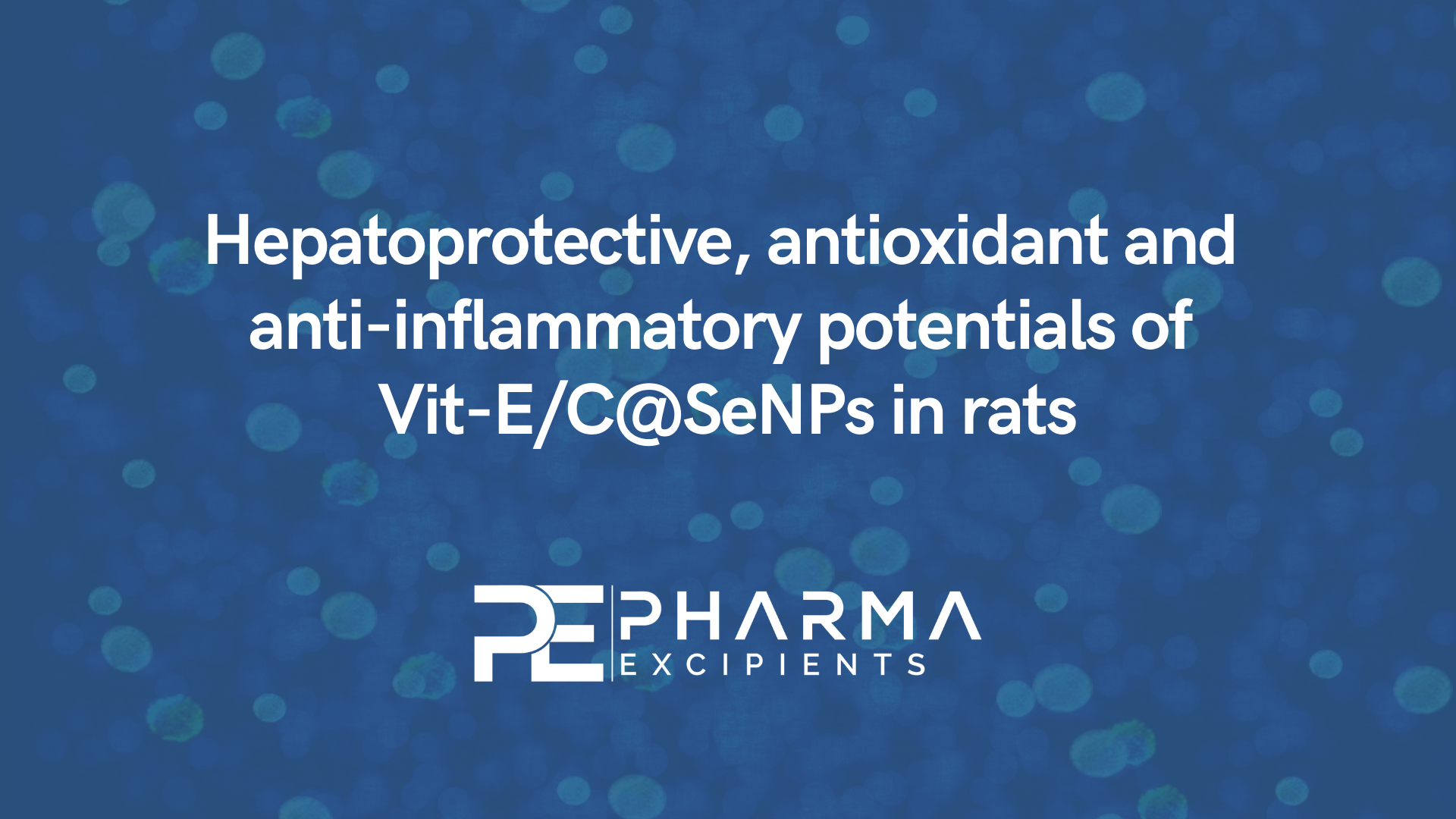Hepatoprotective, antioxidant and anti-inflammatory potentials of Vit-E/C@SeNPs in rats: Synthesis, characterization, biochemical, radio-biodistribution, molecular and histopathological studies

This study aimed to synthesize a nano-structure between selenium, Vit. C, and Vit. E (Vit-E/C@SeNPs) as a promising protective and therapeutic agent for hepatocellular carcinoma. Vit-E/C@SeNPs were characterized using TEM and DLS and its zetapotential was measured to evaluate its stability. DPPH assay and SRB test were performed to estimate its antioxidant capacity and cytotoxicity, respectively. A radiosynthesis of 99mTc-Vit-E/C@SeNPs was done for further in-vivo pharmacokinetic studies on normal and solid tumor induced mice.
Highlights
Vit-E/C@SeNPs is a promising synergistic antioxidant nanoparticles.
Vit-E/C@SeNPs decreased liver function biomarkers as protective and therapeutic agent in hepatocellular carcinoma bearing rats.
Vit-E/C@SeNPs down regulated values of inflammatory gene (TGFβ1, NFκB, iNOS, PPAR-γ and TNFα) and Apoptotic gene (P53).
99mTc-Vit-E/C@SeNPs selectively accumulated in-vivo in liver tissue when examined in normal mic.
Further, in-vivo studies were conducted to investigate Vit-E/C@SeNPs efficacy against hepatocellular damage in Wistar albino rats induced by diethylnitrosamine (DEN) / Carbon Tetra chloride (CCl4). The synthesis results showed spherical Vit-E/C@SeNPs with core size of 50 nm, radical scavenging activity (%RSC) of 75.9%, and IC50 of 27.9 µg/ml. The biochemical analysis results showed that the lower liver function biomarker values (ALT, AST, ALP, total bilirubin and GGT) has gone for the Vit-E/C@SeNPs prevention and treated group, which also showed significant depletion of liver tissue l-MDA, and obvious increase in GSH concentration and CAT activity and marked improvement in the histological feature of liver tissue.
Additionally, a significant up-regulation of mRNA gene expression levels of inflammatory gene (TGFβ1, NFκB, iNOS, PPAR-γ and TNFα) and Apoptotic gene (P53) were determined by using Quantitative real-time PCR (qPCR). The values down regulate and tend to normal in prevention and control group. All of these introduce Vit-E/C@SeNPs as a promising agent as protective and therapeutic agent against DEN/ CCl4-induced hepatocellular damage (Hepatocellular carcinoma).
Article information: Safa A. Aljuhr, Gamal Abdelaziz, Basma M. Essa, Wafaa A. Zaghary, Tamer M. Sakr, Hepatoprotective, antioxidant and anti-inflammatory potentials of Vit-E/C@SeNPs in rats: Synthesis, characterization, biochemical, radio-biodistribution, molecular and histopathological studies, Bioorganic Chemistry, Volume 117, 2021. https://doi.org/10.1016/j.bioorg.2021.105412.
See our video on Vitamin E TPGS:

